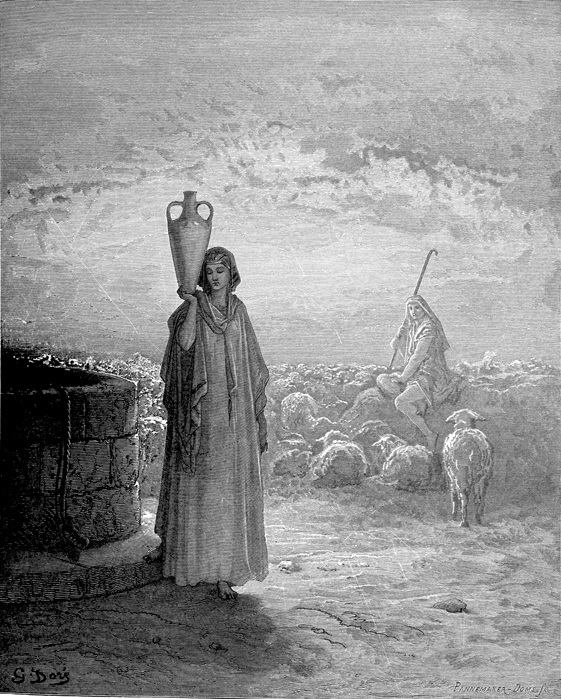Jacob Tending the Flocks of Laban by Gustave Doré, Genesis 30:25-33, Bible.Gallery

Jacob Tending the Flocks of Laban created and it was drawn with engraving style.
Artwork Description
The illustration portrays the patriarch engaged in a significant ritual to win the hand of the beautiful and favored Rachel as his wife. He is seated amidst his flock, while she stands gracefully by a well, having just filled her water-jar. This scene beautifully captures the poetic essence of pastoral life as experienced by the patriarchs. However, we must acknowledge that, according to Jacob's own account in Genesis xxxi. 38-41, this service had another side characterized by continuous toil and harsh exposure. Jacob reveals the challenges he endured, enduring drought during the day, frost at night, and a lack of restful sleep.
Despite the hardships, the first seven years of this laborious service, which Laban demanded as the price for his younger daughter, seemed like a fleeting moment to Jacob due to his profound love for Rachel. However, fate dealt him a harsh blow as he was deceived, and instead of marrying Rachel, he found himself married to her elder sister. Consequently, Jacob had to toil for seven more years to gain the woman he truly loved. This twist of fate could be seen as a form of retribution for Jacob, considering that he had begun his life through deceit and trickery, so it was not surprising that it came back to haunt him.